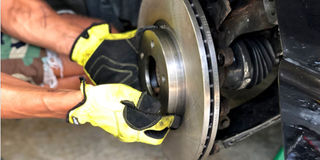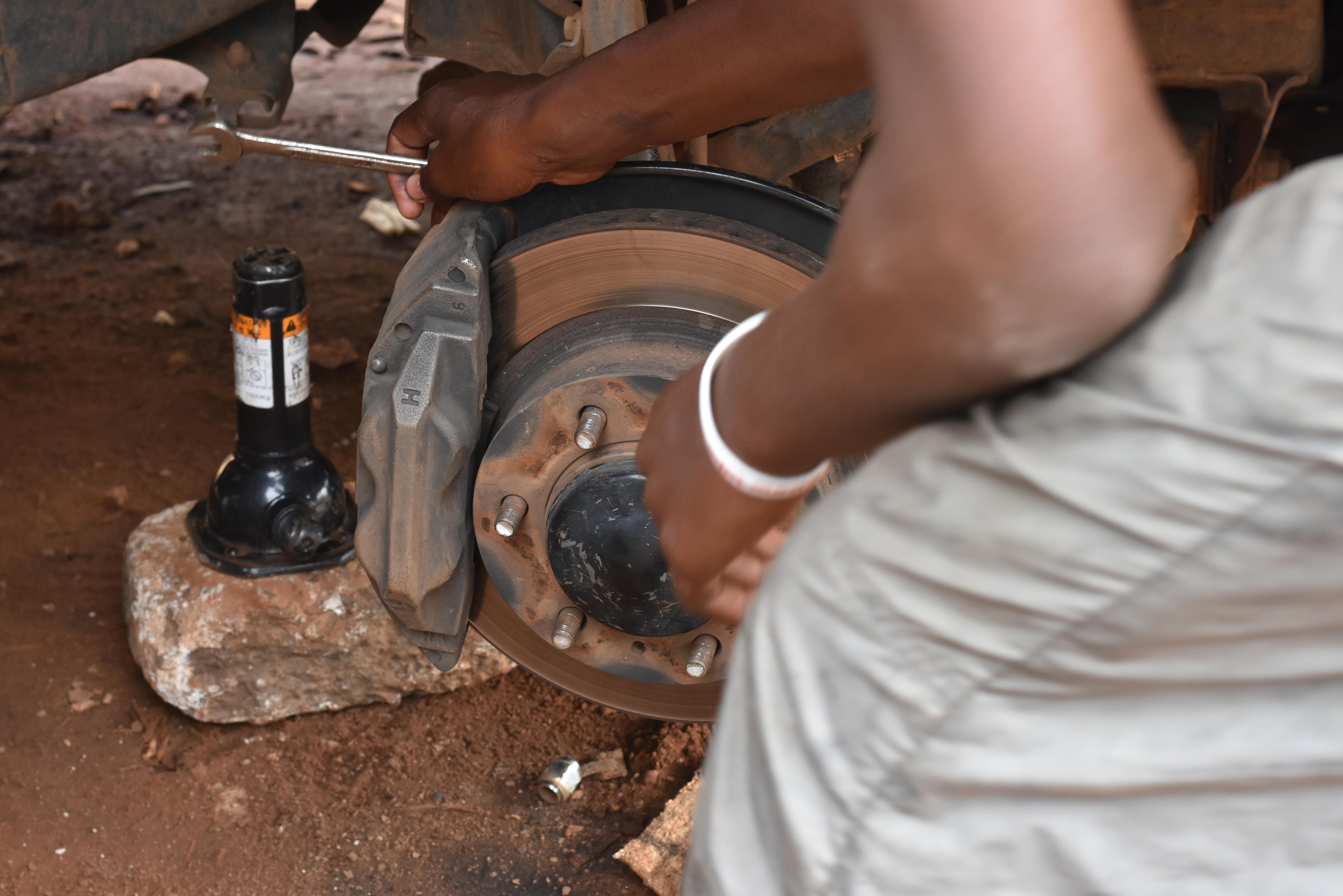Prime
Replacing and maintaining brake rotors

What you need to know:
Without brake rotors, your vehicle would not be able to stop safely or slow down after acceleration
Brake rotors, also known as brake discs, are circular, flat metal discs made of composite materials connected to the wheel. They work work in conjunction with brake pads to slow down or stop your vehicle.
When you apply the brakes, calipers squeeze brake pads together against the rotating surface of your brake rotor, which generates friction that converts kinetic energy into heat. It is this heat that helps in braking or stopping the vehicle. According to www.nubrakes.com, there are four types of brake rotors designed for different vehicles. Therefore, when choosing vehicle rotors, it is important to consider your specific driving needs and vehicle type.
Standard/ smooth rotors
These are the most commonly used rotors. While they are cost effective, they are made up of cast iron and can absorb an average amount of heat. Standard rotors are not good for aggressive driving and excessive braking since this generates a lot of heat and can cause warping and fading of the disc. They, thus, perform reliably under normal circumstances such as your daily commute.
Drilled
Drilled rotors feature holes on the surface of the rotor to allow water, gas and heat dissipation. While they easily fail under high heat, they also tend to be prone to cracking under severe stress.
Slotted
These rotors have slots on the surface. The slots are essential for improving heat dissipation and reducing brake fade. They are majorly found in heavy trucks and Sport Utility Vehicles (SUVs) and are used to improve stopping power when hauling. Additionally, the slots on the rotor surface allow gas and dust to escape, providing a greater resistance to cracks.
Drilled and slotted
These combine both slots and holes on the rotor surface, which enables dust, gas, moisture and heat to escape easily, ensuring good contact with the brake pads. These rotors are great for cars that need enhanced cooling and heat dispersion and improved braking at high speeds.
Faulty brake rotors
The performance and efficiency of brake rotors depends on the speed of the vehicle, road and tyre conditions, weight of the vehicle and the friction generated on the discs during braking.
Ibrah Ssekyana, a mechanic, says while the replacement intervals of brake rotors can vary depending on factors such as driving habits, vehicle type and intended use, replacing brake rotors at the right time helps ensure the safety and performance of the vehicle’s braking system.
When you brake continuously, this causes ridges or cracks on the rotor surface. These ridges reduce the amount of friction between the brake pads and rotors, leading to longer stopping distances and a decrease in braking efficiency.
Another sign is discolouration where the brake rotors turn blue. This is due to excessive heat from prolonged or aggressive braking. Discolouration leads to damage. Additionally, when you are driving and happen to apply your brakes and feel a vibration or pulsation, this may indicate warped brake rotors. Warping can occur due to heat buildup during braking, which is also a sign of worn out rotors.
Maintenance
Regular maintenance and attentive driving habits contribute to prolonging the life of your brake rotors and maintaining a reliable braking system.
Ssekyana advises car owners to periodically inspect brake rotors for signs of wear, scoring or damage while also keeping an eye on the condition of brake pads.
“Continuously checking the two components helps you identify issues such as worn-out brake pads (that are thin or damaged) so that they do not damage the rotors.
Another tip is to avoid aggressive driving habits. This includes frequent hard braking, abrupt stops and overloading your vehicle. Such habits can generate excessive heat due to straining in the braking system, which accelerates rotor wear.
Additionally, after intense or prolonged braking such as when driving downhill, it is key to allow your brakes to cool down by driving gently without heavy braking.
During maintenance, thoroughly clean brake components using a brake cleaner to remove dust, dirt and debris that can accumulate on the rotors.
Also ensure your brake fluid is at the recommended level. As a car owner, Ssekyana also tips on investing in high-quality rotors during replacement so as to provide better performance and durability.
“Look for materials such as cast iron or composite alloys since these have the ability to handle high temperatures,” Ssekyana tips.
Replacing
Although they are generally thought to last a bit longer than brake pads, www.autozone.com notes that rotors are good between 20,000 and 60,000 miles, depending on factors such as driving habits, environmental conditions and vehicle type.
“Drivers who are gentle on brakes and do a lot of highway driving can often have rotors that last for 60,000 miles, but city driving, especially during stop and start traffic can lead to warping as early as 20,000 miles.
Ssekyana advises car owners to consider replacing rotors as part of a comprehensive brake system maintenance plan, especially after a certain mileage threshold.
“When you replace brakes rotors at the same time with brake pads, you improve your vehicle’s braking system performamnce,” he advises.
The first step to replacing brake rotors is to park the vehicle and raise it from the ground using a jack and jack stands. Loosen and remove the lug nuts off the wheel so you can access the brake components.
Once you locate the brake caliper, remove its bolts and carefully hang it from the suspension using a wire or rope. Also, remove the bolts of the caliper bracket and slide out the brake pads.
While the brake rotor is secured with screws, remove them and simply take off the old rotor. Thoroughly clean the caliper, caliper bracket and other components and place the new brake rotor onto the wheel hub, securing it with screws.
Reattach the caliper bracket and tighten the bolts. Insert the new brake pads into the caliper bracket using a C-clamp to compress the caliper piston and leave room for the new brake pads. Finally, slide the caliper over the brake pads and rotor and secure it by tightening the caliper bolts.
Cost
Roger Ssejjaaka, a car accessories dealer, says depending on the type of vehicle, the cost of replacing brake rotors will vary.
While the brake discs for passenger vehicles costs approximately Shs250,000 and above for each brake pad, those of SUVs and race cars cost between Shs300,000 and Shs400,000 each.




